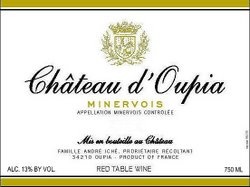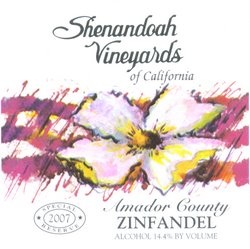Column: Arbor Vinous
Our dinner group was chowing down at the home of former City Council member Steve Kunselman, who wandered over as I discreetly nibbled on a chicken leg.
“This afternoon I was in Village Corner and saw they had a great wine selection,” Steve said. “I wanted to try something new, but it seems like whenever I look for a bottle around ten bucks, I always end up buying brands I already know – Glen Ellen, or sometimes Meridian, because I don’t know which others are good.”
I’m convinced that refrain is hard-wired into the Y-chromosome. Males are constitutionally incapable of advice-seeking for snippets of “guy knowledge” we don’t innately possess. The same guy who drove around lost in pre-GPS days instead of asking for directions feels Y-shamed to walk into a wine store and own up to an inability to intuit which bottle among the hundreds on display he should purchase.
Even flying solo, Steve probably didn’t risk beverage purgatory. In today’s hyper-competitive wine marketplace, thousands of labels from around the world scramble for scarce shelf pace. Truly vile bottles rarely make the cut at credible wine stores.
Unfortunately, there’s a downside. Most moderately priced wines, including both brands Steve mentioned, have morphed into the vinous equivalent of Coke – mass-produced commercial quaffs differentiated as much by the species of animal on the label as by the juice inside the bottle. Wine industry innovator Clark Smith describes this development in an insightful, wide-ranging essay for Appellation America:
Ninety percent of the wine we drink is supplied by ten percent of wineries, mostly big corporate outfits – commodity McWine in a dozen conventional styles – who deliver their product with scientific precision and industrial efficiency. For the most part, marketing departments at large wineries and the winemakers who work for them are astoundingly responsive to market demands. Most wine is a commodity that sells based on very specific parameters that have been honed over the last couple of decades.
So the real challenge becomes to locate the other 10% – well made, non-commodity everyday wines that reflect their producer, grapes and region – all for around ten bucks. And how do you winnow these down to specific wines whose style you’ll enjoy?
If you’re a wine geek, that’s simple. You allocate too many hours reading “Best Buy” selections from the Wine Spectator and Robert Parker, hang out in online discussion groups like the one at Robin Garr’s Wine Lovers Page, and – most important – buy and try a different wine nightly, and sign up for every tasting on the calendar.
But let’s say you’re a normal person. In that case, I recommend a distinctly un-guy strategy: ask for advice from a salesperson in a good wine specialty store or the wine staff at one of the local wine-oriented grocers.
Managers and long-time salespeople in these stores tend to be dedicated wine buffs themselves who enjoy tasting and talking about wine, which likely includes sharing some favorites with you. So go out and make friends. With just a few quick questions about your taste preferences, they may be able to point you toward an obscure gem on the bottom shelf that you’d never locate on your own.
So What’s To Drink?
To demonstrate that guys do seek advice – at least occasionally – I asked a half-dozen Ann Arbor wine pros to recommend two well-made, non-mass-market reds, in the $10 to $12 range.
They responded with gusto, providing a broad assortment from France, Italy, Spain, Argentina, Chile and California. Most are obscure labels you’ve probably never encountered. That was the idea.
Then we rounded up the Vinous Posse and sat down to blind-taste and rate the wines on a scale from ![]()
![]()
![]()
![]()
![]() (Make it into Sangria) up to
(Make it into Sangria) up to ![]()
![]()
![]()
![]()
![]() (Watch out, First Growths!).
(Watch out, First Growths!).
At this price, no one expected undiscovered five-star treasures – and we didn’t find any. But we tasted an assortment of solidly made wines displaying specific grape varieties grown in specific locations, instead of constructed to generic formulas. With few exceptions, we’d buy and pour these wines alongside dinner any evening.
Only small scoring differences separated one category from the next, and tasters disagreed (vehemently) about several of the bottles. So take a look at the notes along with the star ratings to pinpoint styles, grapes and regions that match your taste – or what you’re having for dinner tomorrow night.
2006 CALCU – Colchagua Valley, Chile (Suggested by Audree Riesterer, Whole Foods (Eisenhower Parkway); $12). Nothing subtle happens here, but that’s OK. A big, dense Bordeaux-styled blend writ large from bright-fruited, ripe grapes (60% Cabernet Sauvignon, 25% Carmenere, 15% Cabernet Franc) with a toasty nose, a few green notes typical of Chilean reds, and a long finish. Ultra-New World in style. And did I mention it was big?
2007 CHATEAU D’OUPIA – Minervois, France (Suggested by Alex Pratt, Morgan & York, and Mary Campbell, Everyday Wines – but Mary got a bonus pick so we could taste an even dozen. $12 at both). Deep purple in color but a food-friendly mid-weight palate. Well put together from Grenache and Syrah, with classic southern French “garrigue” and white pepper. “Great with duck,” suggested one of the Posse. A consensus favorite.
2006 DON RODOLFO TANNAT – Cafayate Valley, Argentina (Suggested by Mary Campbell, Everyday Wines; $12). The grape came from France’s Madiran region, where it gave us the word “tannic”. But here it grows at 6000 feet in Argentina’s highest vineyards. “Very New World,” said one taster. Inky purple-black color. intense fruit along with some earthiness and minerality. Mouth-coating but fine-grained tannins that mellow nicely over an hour; enjoy it during a long dinner and follow the changes.
2007 SHENANDOAH VINEYARDS ZINFANDEL, Special Reserve – Amador County, California (Suggested by Rod Johnson, Plum Market; $10). Classic Amador Zinfandel from organically grown grapes – ultra-ripe, warm, jammy red raspberry and strawberry flavors in a low-acid, medium-bodied wine. “Berries by the bushel!” proclaimed one taster. I envisioned pouring a glass alongside some nicely spiced chicken sausages from the grill come summertime. Another consensus pick.
2007 TORMARESCA “Neprica” – Puglia, Italy (Suggested by Mark Smith, Arbor Farms; $12). A blend of Negroamaro, Primitivo and Cabernet Sauvignon from the heel of Italy’s boot. Concentrated sweet cherry fruit and a silky, supple feel in the mouth – along with some tarry flavors that split the house, appealing to most, but not everyone, who tasted it.
2006 COLSANTO RURIS – Umbria, Italy (Suggested by Dick Scheer, Village Corner; $11). The most consistently-liked wine in the tasting; everyone gave it three stars. Nicely balanced and not too dense, with a smooth, well-rounded mouthfeel and ripe Balaton cherry flavor. Very food-friendly. Mostly Sangiovese, with Merlot and Sagrantino. A good choice to appeal to all palates.
2006 DOMAINE DE FONT-SANE – Cotes du Ventoux, France (Suggested by Dick Scheer, Village Corner; $10). Grenache and Syrah from Provence. Another consistently-rated wine. Bright cherry perfume on the nose, followed up by a midweight palate with notes of chocolate and rosemary. Another excellent food wine, with some fine tannins on the finish.
2005 MAS DONIS “BARRICA” OLD VINES – Capçanes, Montsant, Spain (Suggested by Audree Riesterer, Whole Foods (Eisenhower Parkway), $10). Yet more Grenache, along with 15% Syrah, from a Catalan village in northeastern Spain. A whiff of vanilla cream from American oak slightly mars otherwise classic Mediterranean styling, with notes of olives and violets. Surprisingly young-tasting for the oldest bottle on the table. “Lip-smacking good,” said one Posse member.
2006 CHATEAU GRAND CASSAGNE ‘‘G.S’’ – Costieres de Nimes, France (Suggested by Mark Smith, Arbor Farms; $10). A blend of Grenache and Syrah from the Southern Rhone. Inky black with ripe, concentrated black raspberry flavors. A little shy in the acid department and some tannins on the finish. Perfectly drinkable and no glaring flaws, but it veers a little far in the one-dimensional direction.
2006 DOMAINE LA BASTIDE “Douce Folie”– Pays d’Hauterive, France (Suggested by Alex Pratt, Morgan & York; $10). Grenache / Syrah from France’s Languedoc. One of the Posse put it well: “This is a French wine-lover’s wine.” That may explain why I enjoyed it more than some other Posse members. Well-balanced and lighter-bodied than most other wines we sampled, but the flavor profile leans toward leaner, darker tones instead of up-front fruit.
2007 SANTA GUISTINA BARBERA – Colli Piacentini, Italy (Suggested by Rod Johnson, Plum Market; $11). From northern Italy, between Milan and Genoa. Very ripe fruit and a wonderfully silky palate didn’t quite overcome some off-flavors variously described by Posse members as “vegetal”, “skunky” or “rhubarb.” Imported by Ann Arbor-based US Imports.
2007 SANSILVESTRO BARBERA “Ottone” – Piemonte, Italy (Suggested by Mary Campbell, Everyday Wines; $10). Another northern Italian, this one between Turin and Genoa. A pleasant enough quaff with some heavy toast on the nose, but overall the Posse was tough on this Barbera, subtracting points for a slight petillance and short finish. One taster summed up the consensus as “all fruit, no substance.”
____________________________________________________
And now for something completely different. Here’s a 25-minute video that may alter forever how you respond to wine reviews by high-profile critics. It explores whether some top wines are being made for consumers to enjoy, or cynically custom-crafted to win top point scores from the critics. You may possibly infer its viewpoint from the title: Robert Parker’s Bitch.
About the author: Joel Goldberg, an Ann Arbor area resident, is editor of the MichWine website. His Arbor Vinous column for The Chronicle is published on the first Saturday of the month. If you’d like to keep up with local wine events, visit MichWine’s Ann Arbor wine calendar. To list your event on the calendar, submit it here.






